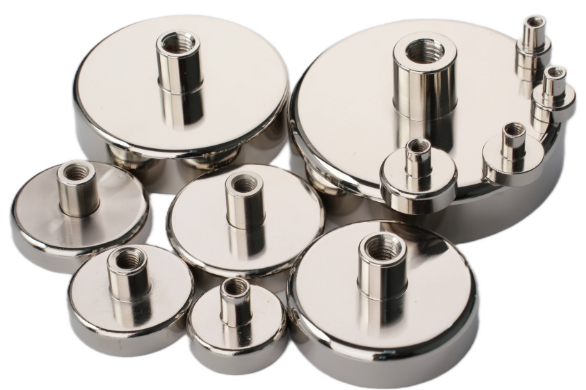NdFeB Permanent Magnet Motors in Aviation
The main applications of NdFeB permanent magnet motors on aircraft are various kinds of electric actuating systems. Electric actuation system is a drive system with motor as actuator, which is widely used in aircraft flight control system, environment control system, brake system, fuel and starting system. There are 4 kinds of actuating systems on aircraft, hydraulic, electric, pneumatic and mechanical. Hydraulic actuating system is the most widely used, but the most promising actuating system is electric actuating system. With the development of rare earth permanent magnets, high power semiconductors and microprocessors, electric actuation systems have developed to a competitive position with hydraulic actuation systems.

(1) Flight control system
The electric actuator used in the flight control system is also called the power telex actuator. It is mainly used in the operation of wings and rudder. It is mainly divided into electro-hydraulic actuators and electromechanical actuators. In the mid-1970s, the hydraulic system of American helicopters suffered frequent failures in important international events, prompting them to research and develop rare earth permanent magnet electric steering gear. Neodymium permanent magnet brushless DC motor (NdFeB-PMBLDCM) technology is used in the electro-hydraulic actuator developed for the next generation of flight control rudders by GE, Vickers, and HR Dextron. The high voltage DC rare earth permanent magnet brushless DC motor technology and pulse width modulation power converter technology are adopted in the mechatronic actuator. The motor controller receives the control commands from the flight control computer on the aircraft, processes, synthesizes, and amplifies the signals of the servo amplifier of the three-channel rudder loop system, and then drives the output angle of the corresponding rudder to control the rudder and aileron of the aircraft, thereby changing the attitude and course of the aircraft and realizing the flight control system.

(2) Electric environment control system
Electromechanical actuation technology is adopted in the electric environment control system, which is characterized by a high-power, high-speed variable-speed drive motor. Electric steam circulating environmental control system has been developed in the United States since 1982 and tested on P-3 antisubmarine aircraft. The compressor is driven by a variable-speed high-voltage DC rare-earth permanent magnet brushless DC motor with a speed range of 30000-70000 r/min. The samarium cobalt permanent magnet motor outputs 34.3 kW power at 45000 R / min. The output signal of the Hall rotor position sensor is directly used to measure the speed of the motor indirectly so that the motor can achieve high precision and steady speed under the condition of large-scale variable load without requiring a simple speed sensor. The time control precision of the original DC brushed electric excitation series motor driving the electric valve is discussed.
(3) Oxygen generating system in the air
Oxygen concentrator is an important airborne equipment of advanced aircraft. It provides pilots with the life endurance capability. At present, only four countries such as the United States have this technology. China has entered the international advanced ranks of technology and has successfully developed an oxygen concentrator. The motor used is a low-speed high-precision brushless DC motor speed stabilization system, using samarium cobalt permanent magnet excitation, driving the valve to 6 R / min rotation.
(4) Electric brake system
The electric brake system was developed in the US in 1982 and tested on the A-10 attack aircraft. In 1990, the third generation of the electric brake system was completed, using a high torque samarium cobalt permanent magnet brushless DC motor and pulley worm actuator. In the 98 years, the US F-16 fighter launched a new electric brake system. The electric actuator of the system adopts four rare earth permanent magnet brushless DC motors. Due to the use of brushless motors and low inertia components, the response frequency of electromechanical actuators is 20-30 Hz, while that of hydraulic actuators is only 10 Hz. The electric braking system can reduce the 22.5~45kg of fighters.
(5) Fuel system
The system's hydraulic pump and hydraulic valve used to be driven by a brush DC motor in the past. A Brushless DC motor is used now. The motor works with the pump immersed in the fuel. The controller is installed with the motor body and the shell and is completely sealed. The motor adopts a neodymium magnet or SmCo magnet with high-temperature resistance and 1J22 high magnetic conductivity stator core material. It has the function of speed closed loop and soft start with digital control.















